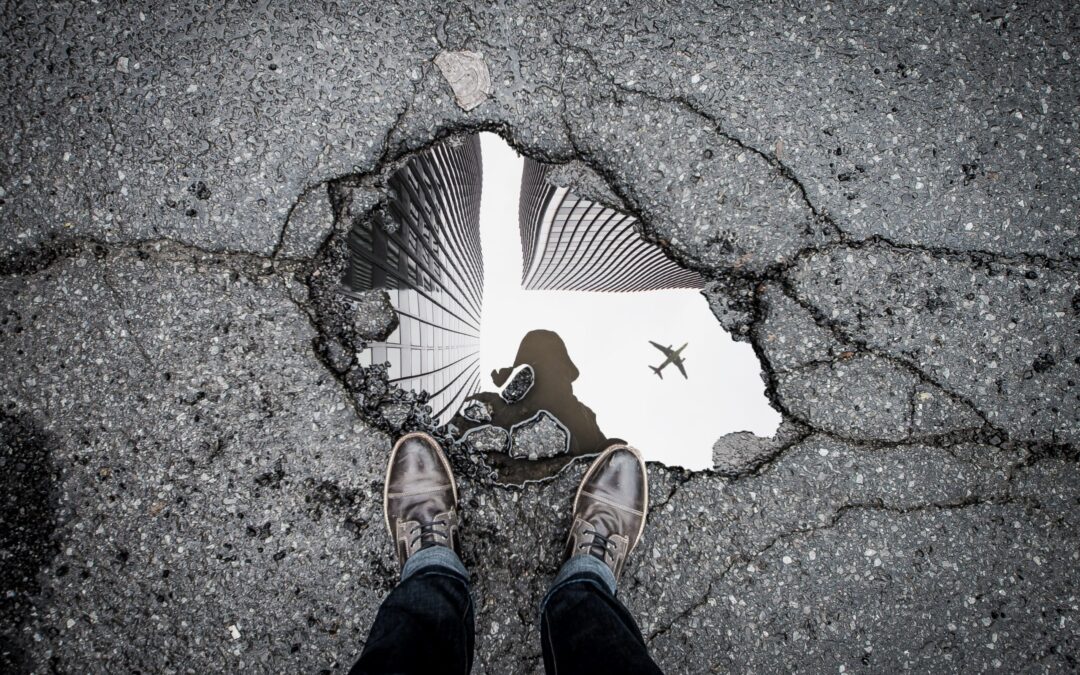Most drivers are familiar with the unique sense of dread that sets in immediately after hitting a really bad pothole. It might also come with a few choice words and thoughts like, “my poor alignment!” and “what if that ruined my tire?!”
The good news is that most potholes aren’t large or deep enough to do instant damage to your vehicle. But if your vehicle is damaged because of a pothole, what should you do? And will your car insurance cover the damage? We’ve got the answers to your questions.
If you hit a major pothole and can tell that it has done damage to your vehicle, take photos of any visible damage and the pothole (if it’s safe to do so), and write down where the pothole is located. Contact your insurance broker or your insurance company’s claims service line right away so they can tell you what to do next and help you coordinate repairs. If you need to have your vehicle towed, your insurer can help with that as well.
In some cases, after your claim is paid, your insurance company may be able to seek reimbursement from the local government where you hit the pothole — but they generally have a very short timeframe to do so, so it’s important that you tell them about it right away.
What kind of damage can a pothole do to your vehicle?
While most modern vehicles are built to withstand rough road conditions, hitting a very large or deep pothole at a high speed or with inadequate tire pressure can damage your steering, suspension, or alignment systems. Some signs of post-pothole damage might include a pulling sensation in one direction, dents in your tires or rims, or low tire pressure. In the worst-case scenario, hitting a pothole could cause you to lose control of your vehicle end up in a collision with another car on the road.
Can you claim pothole damage on your car insurance?
Yes, most car insurance policies will cover damage caused by a pothole — as long as you have the right coverage. Hitting a pothole is generally considered a single vehicle collision, meaning any damage done would either be covered by the collision section or the all-perils section of your car insurance policy. Collision coverage and all-perils coverage are optional, so if you opted out of both of these when you bought your policy, you’ll have to pay to repair the damage yourself.
Remember: the point of car insurance is to put you back in the same position you were in before a collision. Car insurance doesn’t cover everyday wear-and-tear (that should be addressed with regular maintenance), but it covers unexpected events and resulting damage.
Do you have to pay your deductible if your vehicle is damaged by a pothole?
If you make a claim for damage to your vehicle after you hit a pothole, you’ll have to pay the deductible for whatever part of your policy is covering the damage. For example, if your claim is being paid out through your collision coverage, you’ll need to pay the deductible listed for that section of your policy. If your insurer tries to seek reimbursement from the local government and they’re successful, there’s a chance that they may be able to get your deductible back for you at the same time.
How can you prevent pothole damage?
When it’s light outside and weather conditions are clear, it’s pretty easy to avoid hitting a pothole by safely changing lanes or slowing down when you see one up ahead. But when it’s dark outside or weather is impacting visibility, it can be a lot harder to spot a pothole until it’s too late to avoid hitting it. Keeping your tires properly inflated, travelling at a safe speed for the road conditions, and keeping your eyes on the road can all help you avoid the damage that can come with hitting a pothole.
If you have any questions about how your own car insurance policy would respond in the event that your vehicle is damaged by a pothole, contact your licensed car insurance broker today.
This Article originally appeared at economical.com/

